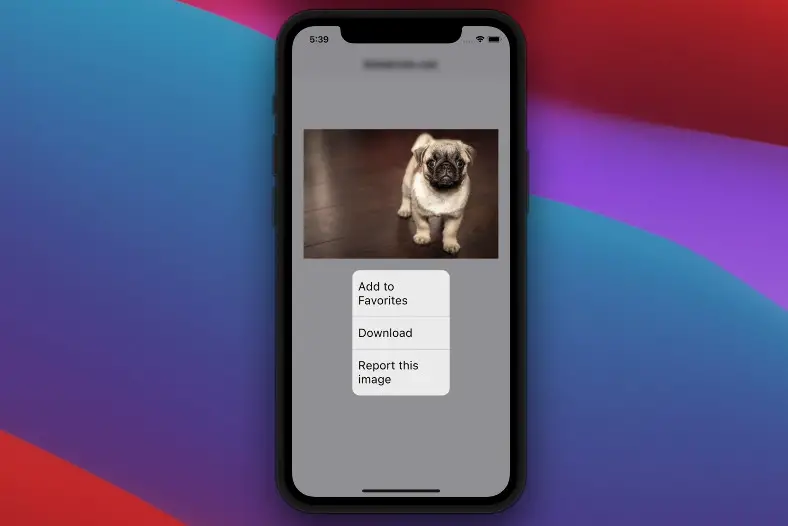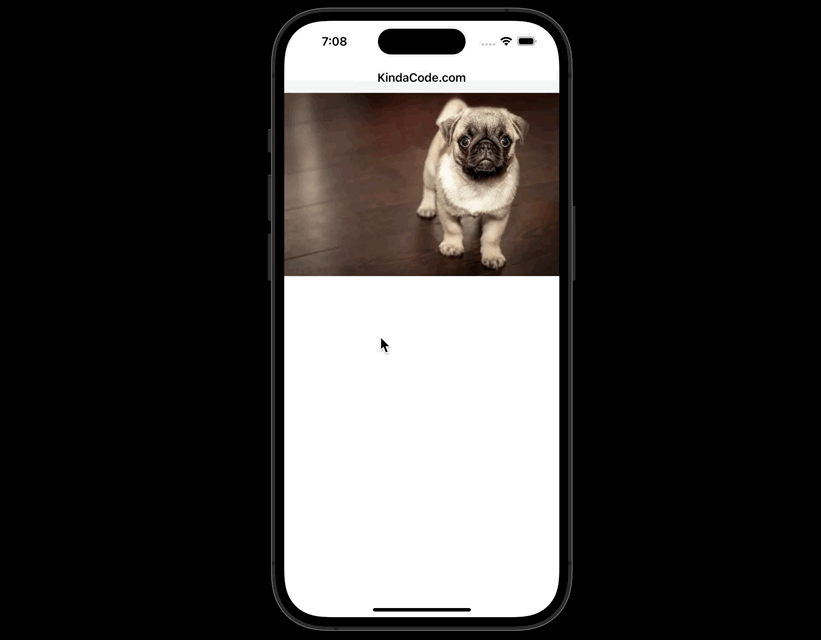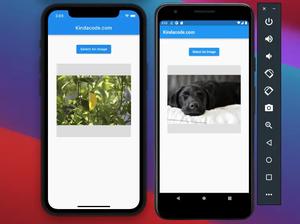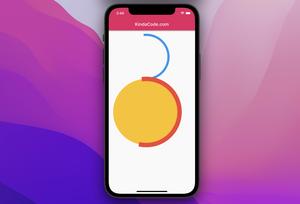
This article walks you through a complete example of implementing a Cupertino context menu (iOS-style context menu) in Flutter.
Table of Contents
Example
App Preview
In this example, we’ll create a sample Fluter app that displays an image from the internet. When the user long presses on the image, the Cupertino Context Menu will show up with 3 options: Add to Favorites, Download, and Report this Image. When an option is selected, a message will be printed to the console.
Here’s how it works:

The Code
The CupertinoContextMenu code:
CupertinoContextMenu(
actions: [
CupertinoContextMenuAction(
child: const Text('Add to Favorites'),
onPressed: () {
// Implement your logic here
debugPrint('Added to Favorites');
// Then close the context menu
Navigator.of(context).pop();
},
),
CupertinoContextMenuAction(
child: const Text('Download'),
onPressed: () {
// Implement your logic here
debugPrint('Downloaded');
// Then close the context menu
Navigator.of(context).pop();
},
),
CupertinoContextMenuAction(
child: const Text('Report this image'),
onPressed: () {
// Your logic here
debugPrint('Reported');
// Close the context menu
Navigator.of(context).pop();
},
)
],
child: Image.network(
'https://www.kindacode.com/wp-content/uploads/2020/10/dog_sample.jpg')
),Full source code in main.dart:
import 'package:flutter/cupertino.dart';
void main() {
runApp(const MyApp());
}
class MyApp extends StatelessWidget {
const MyApp({Key? key}) : super(key: key);
@override
Widget build(BuildContext context) {
return const CupertinoApp(
// Remove the debug banner
debugShowCheckedModeBanner: false,
title: 'Kindacode.com',
home: MyHomePage(),
);
}
}
class MyHomePage extends StatelessWidget {
const MyHomePage({Key? key}) : super(key: key);
@override
Widget build(BuildContext context) {
return CupertinoPageScaffold(
navigationBar:
const CupertinoNavigationBar(middle: Text('KindaCode.com')),
child: SafeArea(
child: CupertinoContextMenu(
actions: [
CupertinoContextMenuAction(
child: const Text('Add to Favorites'),
onPressed: () {
// Implement your logic here
debugPrint('Added to Favorites');
// Then close the context menu
Navigator.of(context).pop();
},
),
CupertinoContextMenuAction(
child: const Text('Download'),
onPressed: () {
// Implement your logic here
debugPrint('Downloaded');
// Then close the context menu
Navigator.of(context).pop();
},
),
CupertinoContextMenuAction(
child: const Text('Report this image'),
onPressed: () {
// Your logic here
debugPrint('Reported');
// Close the context menu
Navigator.of(context).pop();
},
)
],
child: Image.network(
'https://www.kindacode.com/wp-content/uploads/2020/10/dog_sample.jpg')),
));
}
}Afterword
We’ve examined an end-to-end example of using an iOS-style context menu in a Flutter app. If you’d like to explore more about Cupertino stuff and other interesting things in Flutter, take a look at the following articles:
- Flutter Cupertino Button – Tutorial and Examples
- How to use Cupertino icons in Flutter
- Flutter CupertinoSegmentedControl Example
- Example of CupertinoSliverNavigationBar in Flutter
- Flutter: CupertinoPicker Example
- Flutter: Dynamic Text Color Based on Background Brightness
You can also check out our Flutter category page or Dart category page for the latest tutorials and examples.



















